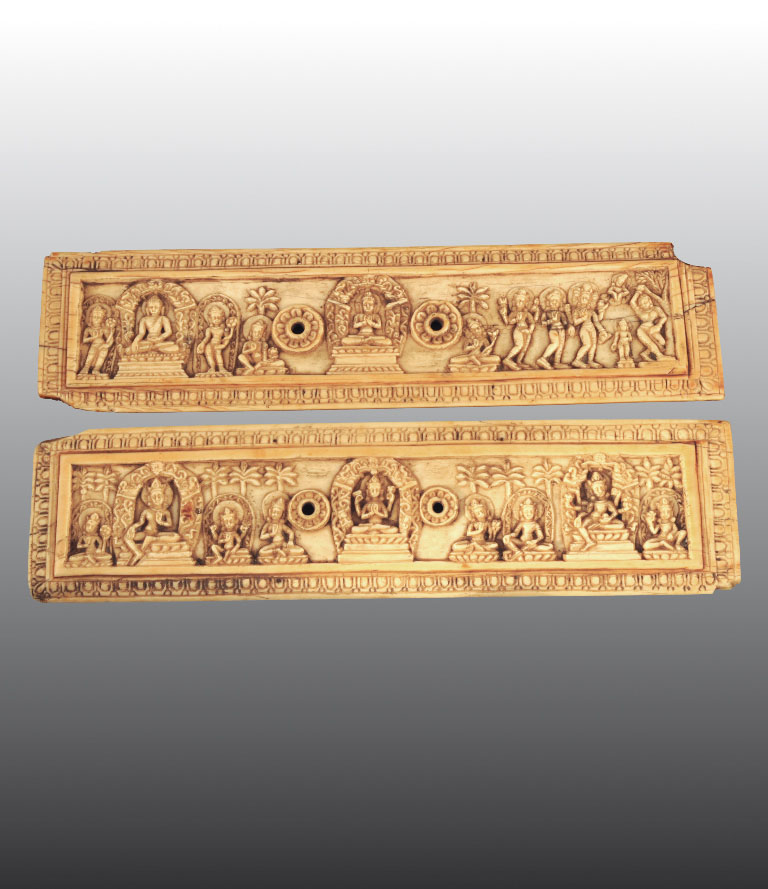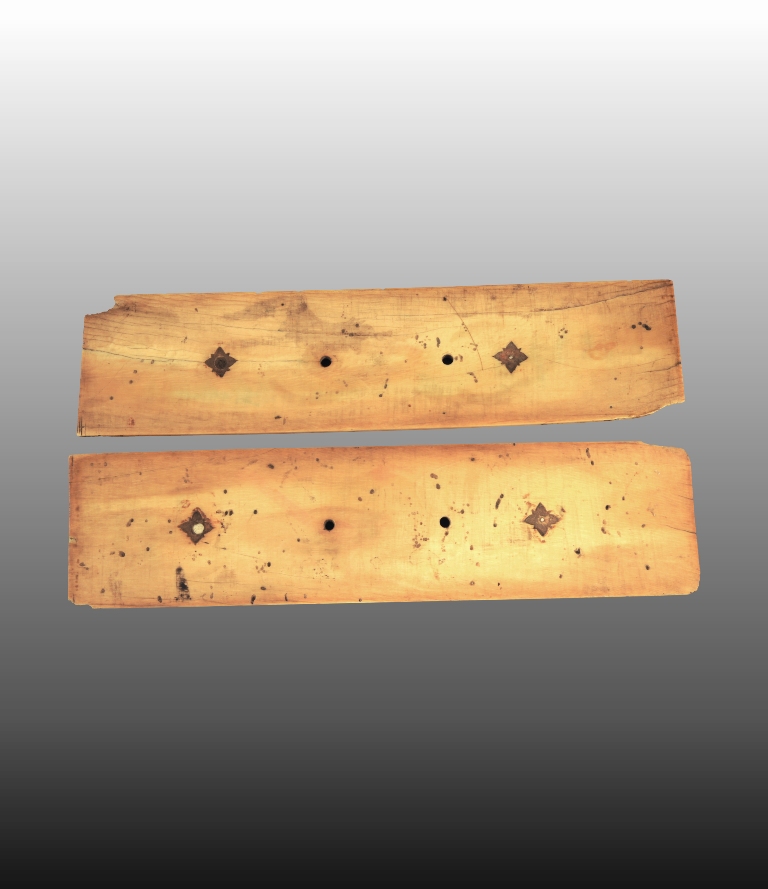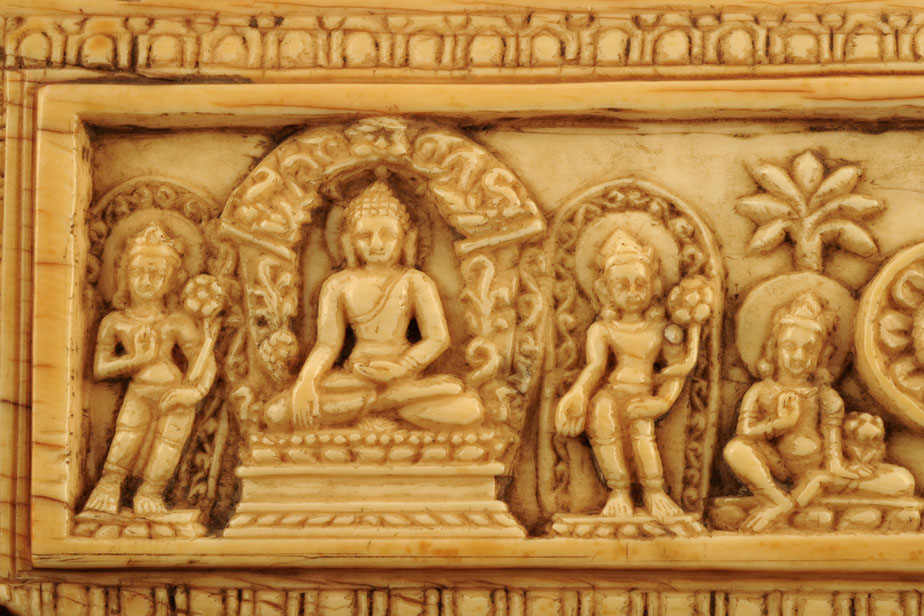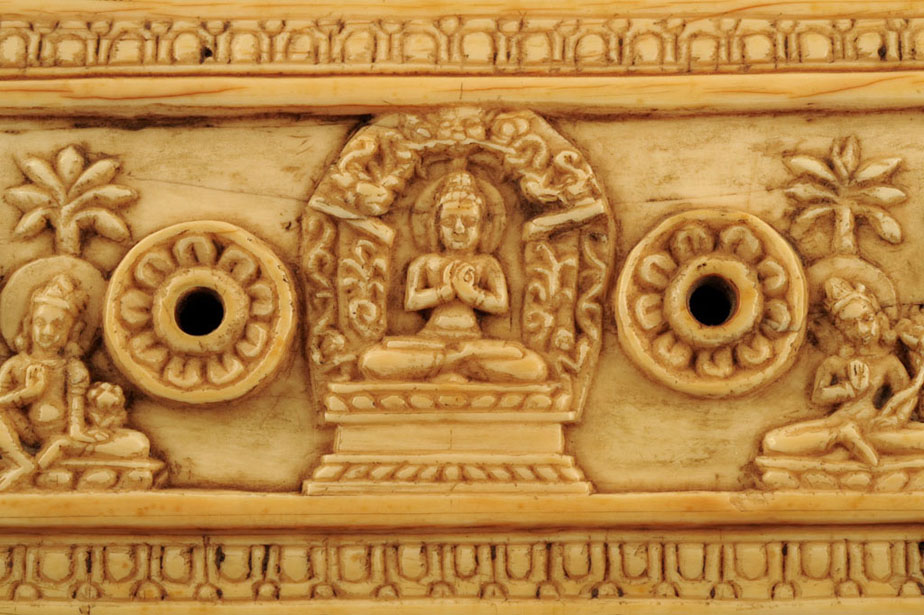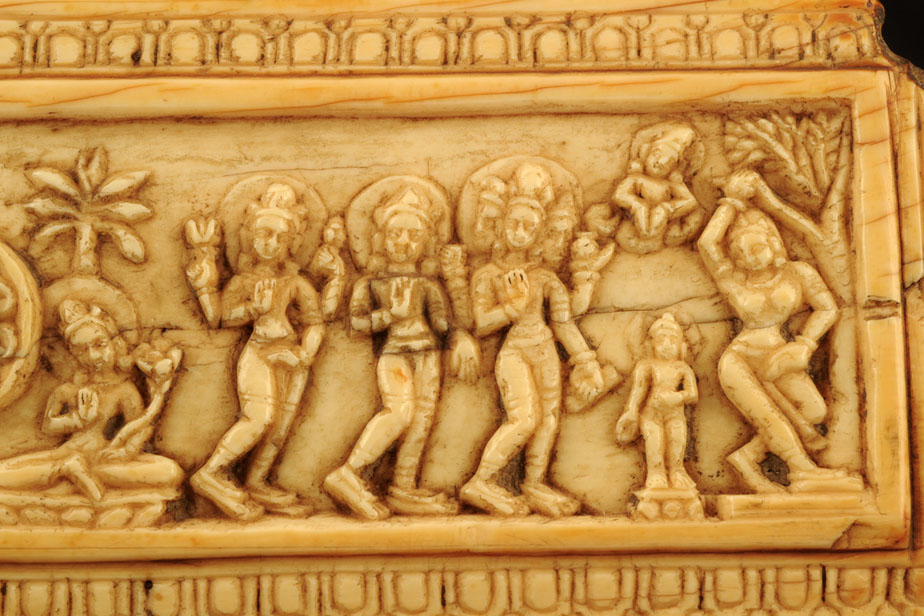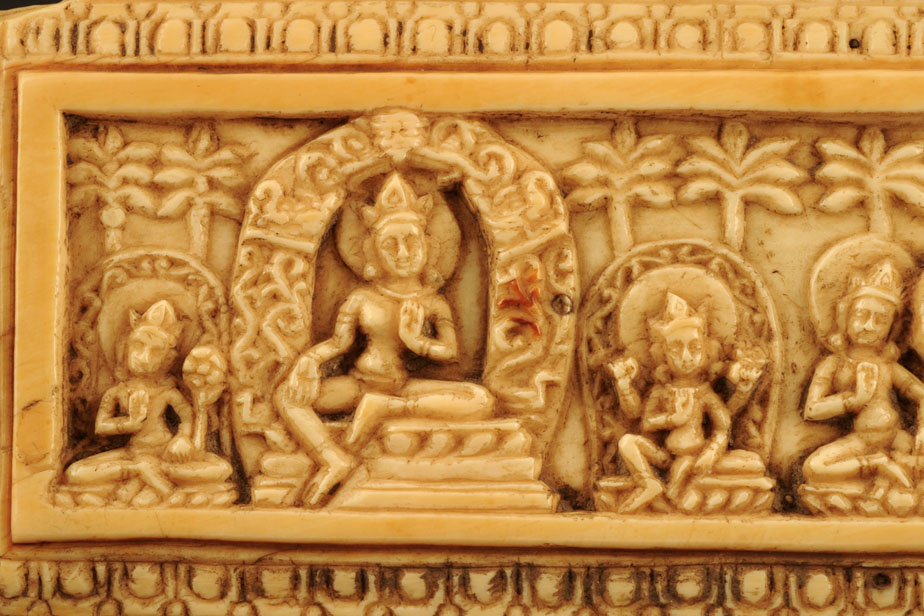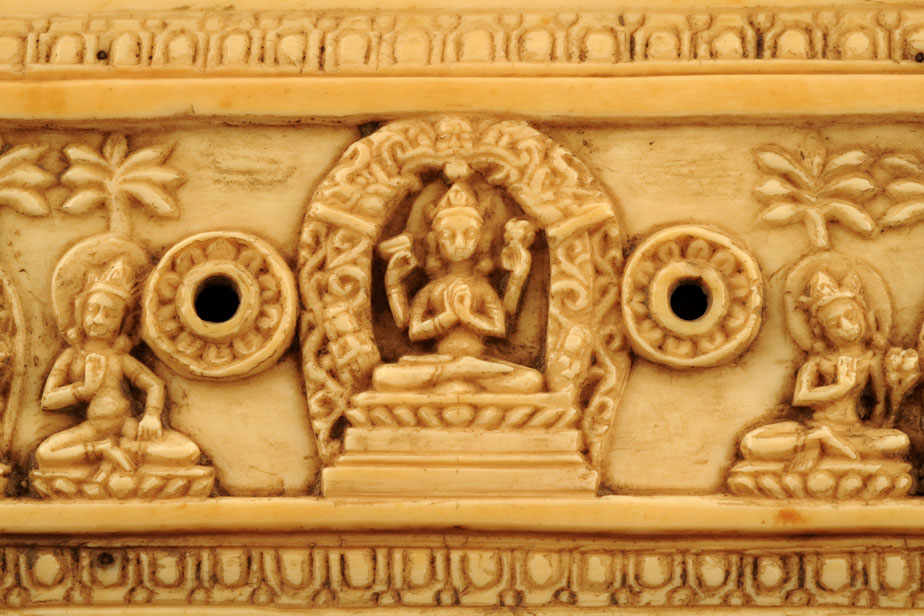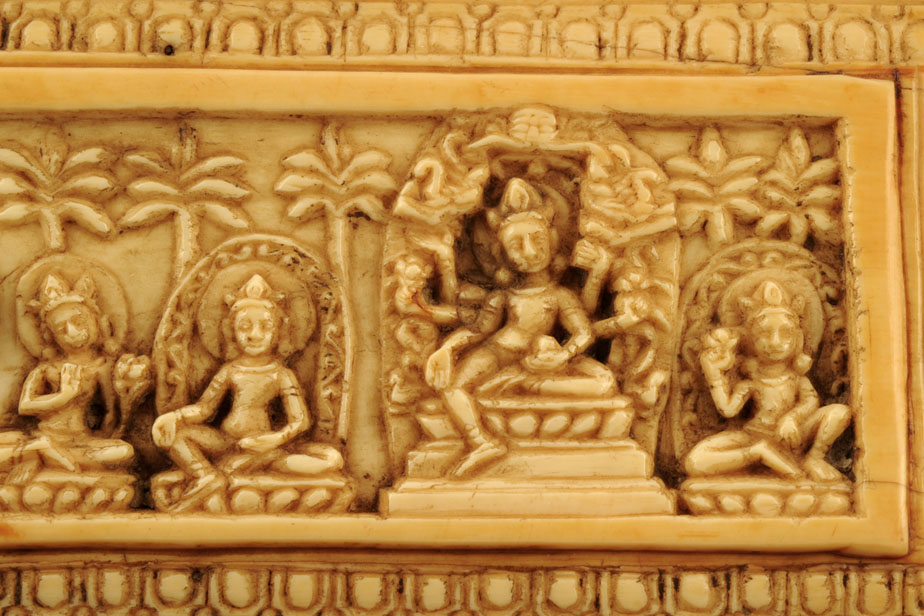Book coversNepal - Ivory - Width 22.5 cm - height 5.5 cm - 16th centuryThese engraved book covers embellished conceivably two different books. One might have contained the hagiogra- phy of the historical Buddha Shâkyamuni or a text attrib- uted to him (sutra); the other a version of the Pra- jnâpâramitâ, the “Perfection of Wisdom”, probably drawn up by the Indian philosopher and master Nâgârjuna. Indeed, the first cover depicts some important moments in the life of Shâkyamuni: in the centre, the delivery of his first sermon in the deer park at Sârnâth , as indicated by his gesture, namely that of teaching and starting up the turning of the Wheel of the Doctrine. To the right there is his miraculous birth from the hip of his mother, Mahâ Mâyâ, assisted by three of the most important deities of the Hin- du pantheon: Shiva, Indra and Brahmâ. To the left there is the reaching of his Enlightenment, evoked by the gesture of touching the earth and calling upon it to testify his achievement, witnessed by two forms of the Bodhisattva Padmapâni (see nos 2 and 3). 1 Cf. Pratapaditya Pal, Himalayas. An Aesthetic Adventures, The Art Institute of Chicago in association with the University of California Press and Mapin Publishing, Chicago 2003, pp. 52- 53, fig. 26. ALC (Free Circulation) |
